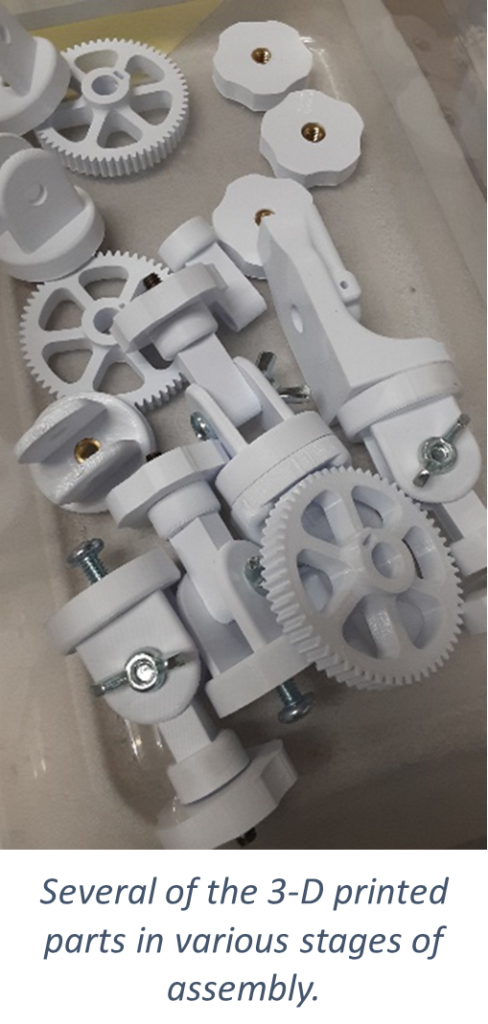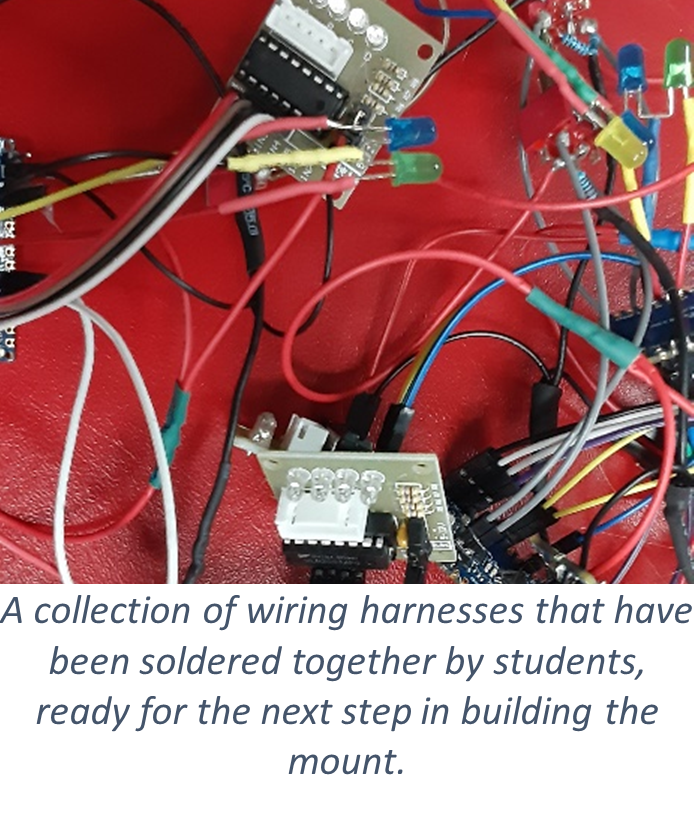EdEon News | November 2, 2023
Building The Mount

Written by Hannah Hellman

When Laura Peticolas submitted the Eclipse Megamovie 2024 (EM2024) grant for funding in 2022, we proposed to give away 100 3-D printed equatorial mounts to ensure that we would receive high quality photographs of the Sun’s corona. For our project’s purposes, “high quality” means that we would be able to reliably identify transient plasma
Equatorial mounts can be prohibitively expensive, costing as much as $6,000. The EM2024 mount, however, costs approximately $50 to print and build, so the design and implementation of these mounts not only increases the likelihood of high-quality scientific data being generated for our project, it also creates an opportunity for community scientists to elevate their skills and experience in the field of astrophotography.
The first step in the design process was to modify the code on the microprocessor to adjust for photographing the sun rather than the stars, which most astral photography software is based on. The DIY Equatorial Mount plans and instructions that inspired EM2024’s design by was meant to photograph stars and other astrophotography, not necessarily the Sun. The tracking of the sun is a little different than tracking of the stars for various reasons, but it is incredibly important to differentiate so that we can get the clearest images possible.
Three 3-D printers at Sonoma State University, one Ultimaker in the EdEon headquarters and two in the SSU Makerspace, ran basically non-stop for a little over one and a half months. The printing went on for more than 300 hours and used about 13 1kg reels of PLA plastic. Assembly took longer, about three months, and included the help of EdEon student interns as well as other staff. Sabrina Blais and Christopher Bell helped solder and build parts of the mount (including the wiring harness), and Robert Martinez (EdEon Administrative Assistant) facilitated the building and boxing of mounts for shipment.
Jeffery built the first mount prototype once we were officially funded by NASA, and tested the mount, camera and tripod before moving forward with the Nighttime Imaging ‘N Astronomy (NINA) software. He successfully programmed the mount to track the sun, taking some great photographs as it went. The beauty of using the NINA software is that it allows our volunteers to simply click “go,” when totality begins. This allows them to experience totality Figure 4: One of the photographs of the sun taken during Jeffery’s testing of the mount. while also collecting professional quality, scientifically significant, photographs of the sun during a total solar eclipse.
With the EM2024 mounts built and ready to ship, our project has moved one step closer to being able to learn more about solar plasma transients. Want to learn more about solar plasma transients? Stay tuned for our next post!


